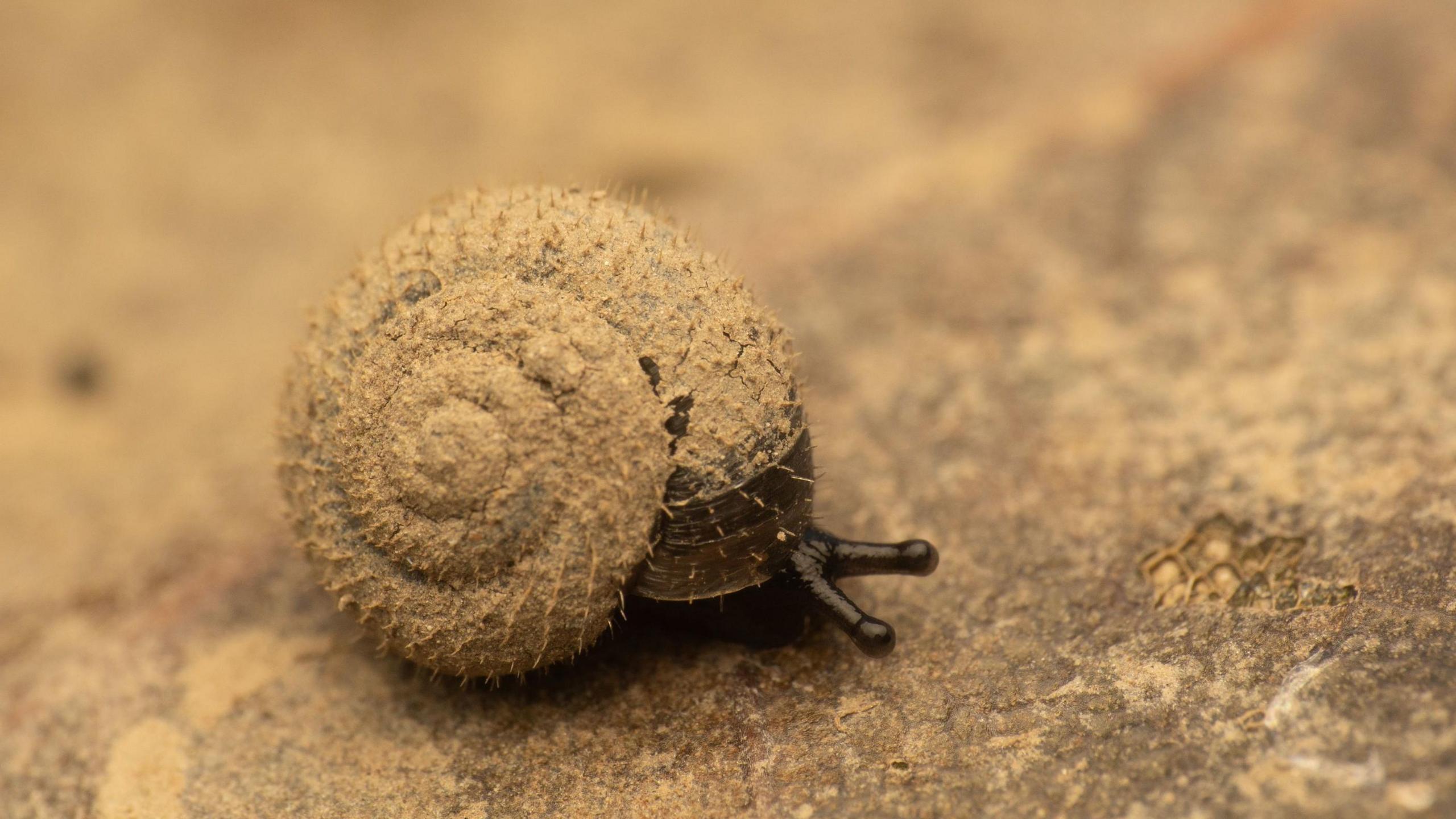Project launched in London to save 'hairy snail'

- Published
Have you ever heard of a hairy snail? The rare species is one of the UK's most endangered molluscs.
It's known as the German hairy snail because of tiny hairs that cover its shell.
It can only be found in small, fragmented areas of its historic damp, riverside habitat along the Thames, a river that flows through south-west England into London.
Conservationists and are working with members of the public in a project to try and save it.
Snails that need protecting because they are 'so beautiful'
- Published19 August
Tiny snail found in wild for first time in 40 years
- Published26 September 2024
1,300 tiny endangered snails released on remote Atlantic island
- Published29 December 2024
The project team, led by Citizen Zoo and Zoological Society of London (ZSL) has started a series of surveys to better understand where this species of snail can be found across the capital.
Over the last couple of months the team has been searching for and identifying species at both known and potential river sites in London boroughs such as Newham, Richmond upon Thames and Barnet.
It hopes this will help them to build a stronger picture of the snail's current UK range.

The River Thames flows through London, and is where the remaining hairy snails can be found
This will enable them to identify how restoring the snails' habitat, managing pollution and the careful movement of snails between sites can help their numbers to increase.
Joe Pecorelli from ZSL, said: "This charming little snail has called our riverbanks and wetlands home for thousands of years - yet it is sadly now very rare in the UK, potentially restricted to just a few sites along the Thames.
"These surveys will help us understand how the snail is faring and how we can protect it - not only securing their future for years to come, but also helping safeguard green spaces throughout London for people and wildlife for future generations."

Riverbanks like this in Richmond on Thames, are among those were the snails have been spotted
Although first recorded in the UK in 1982, fossilised remains show that the German hairy snail has been around in the UK since at least the Stone Age.
The fine hairs that run along its shell are thought to help the snail to sweat off moisture, making its slime sticky enough for it to cling to the slippery objects in the riverside and the plants it feeds on.
By learning more about where this rare snail likes to live, the team hopes to ensure its survival and also be better able to support other native species such as water voles, dragonflies and kingfishers in the future.
